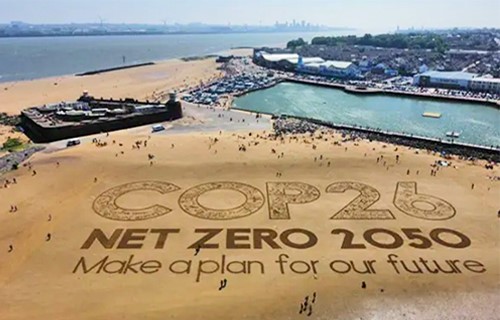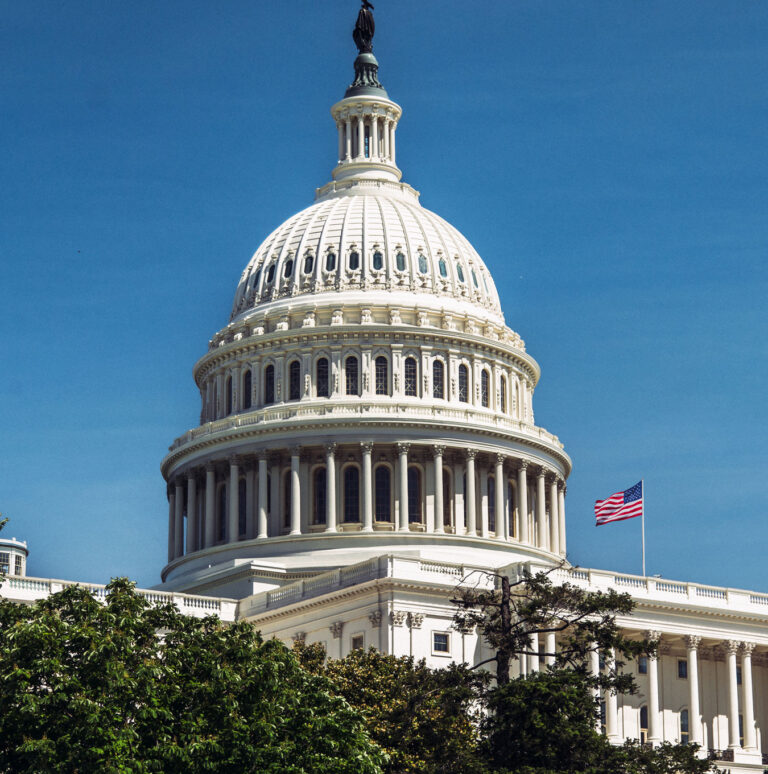-
Thoughts on COP26
The 2021 United Nations Climate Change Conference, COP26, commenced this weekend with 25,000 delegates from over 100 nations converging on Glasgow. The conference is a major landmark in international climate policy. Progress reports and revisions to previously-pledged goals for reducing greenhouse gas emissions are now due. In recognition of the ever-increasing ambition expected of these commitments, this process is referred to as the “ratchet mechanism.” The conference takes place against the backdrop of European natural gas prices, which have risen almost sixfold in a year, and amidst logistical challenges of moving delegates around during a transport workers’ strike in Scotland.
Ultimately, the replacement of coal, natural gas, petrol and diesel with sustainable electricity generation will become the primary channel for reducing emissions.

Cop26 sand art next to the 26 ice sculptures on New Brighton beach
Credit: Peter Byrne/PAMuch of the recent spike in European natural gas prices (p.10) is the result of supply-side factors. As economies reopen and consumers return to pre-pandemic levels of activity, energy producers have not found it so easy to rapidly scale up output, especially for infrastructure mothballed as industrial demand collapsed during 2020. Competition for the supply that is available, combined with the imperfect substitutability of renewables, has resulted in spot prices increasing as much as 25 times during periods of peak demand. It is not only heating homes and generating electricity that will become more difficult and costly if natural gas prices remain high – knock on effects will be felt in in many kinds of consumer staples.
The short-term supply factors driving energy prices will likely fade as extraction capacity returns to pre-pandemic levels. In the longer term, the broader agenda to move away from fossil fuels suggests structural declines in the demand for natural gas. The U.K. government has moved to restrict future domestic use of gas for heating, banning the sale of new domestic gas boiler systems from 2035. The EU, where natural gas accounts for some 32% of final household energy consumption–-against just 12% for petroleum–-has proposed a second Emissions Trading System (“ETS”) covering the buildings and transport sector to start operating in 2025, alongside the existing ETS covering the electricity and industrial sectors1.
Apart from the EU, the three largest economies in the world are all making plans to ramp up their own transition from fossil fuels to renewables. Under President Biden, the U.S. has re-joined the Paris Agreement, and committed to net-zero emissions by 2050. China has pledged to be carbon neutral by 2060, even though it relies on coal for more than half of its power today. Japan has pledged to reach net zero by 2050, and 40% of the 225 companies in the Nikkei stock index have made similar pledges.
In the medium term, growing populations as well as increasing dependence on data centres, electronic devices, networking infrastructure and electric vehicles will likely drive electricity demand higher rather than lower. The major mechanism by which countries will aim to meet the ambitious goals set out at COP26 is known as ‘greening the grid’. As the renewable infrastructure to accomplish this goal is constructed, it is possible that reliance on natural gas will increase, rather than fall, as coal is phased out. Ultimately, the replacement of coal, natural gas, petrol and diesel with sustainable electricity generation will become the primary channel for reducing emissions.
As national governments increasingly accept the necessity of expensive interventions to meet ambitious climate goals (p.6), a key challenge for asset allocators will be to adapt to all these fast-moving changes. State spending will likely aim to ‘prime the pump’ of private investment, and with some 80% of global energy demand interacting with the built environment2, real estate investors have both a vital role to play and a considerable opportunity.
The World Resource Institute considers buildings “by far the largest source of low-cost [carbon] reductions.” By acting ahead of the curve, landlords may be able to achieve higher occupancy, stronger tenant demand, lower ongoing expenses, and resulting higher net operating income from refurbished Net Zero Carbon buildings.
Investors are increasingly looking to broader real asset types to transition to Net Zero Carbon. This new generation of investors and their managers will be advancing their sustainability programs to minimize climate-related risks while identifying new opportunities. Investment managers with Net Zero Carbon commitments, such as LaSalle’s alignment with ULI’s “Net Zero by 2050” commitment, as well as our participation in the Net Zero Asset Managers Initiative, signal the commitments that our firm has made to transition to Green Energy.
2. iea.org/data-and-statistics/data-product/world-energy-balances-highlights

Jul 01, 2025
PERE: Q&A with Global CEO Mark Gabbay
LaSalle’s Global CEO sat down with PERE to discuss the world’s simplest, most complicated asset class.



